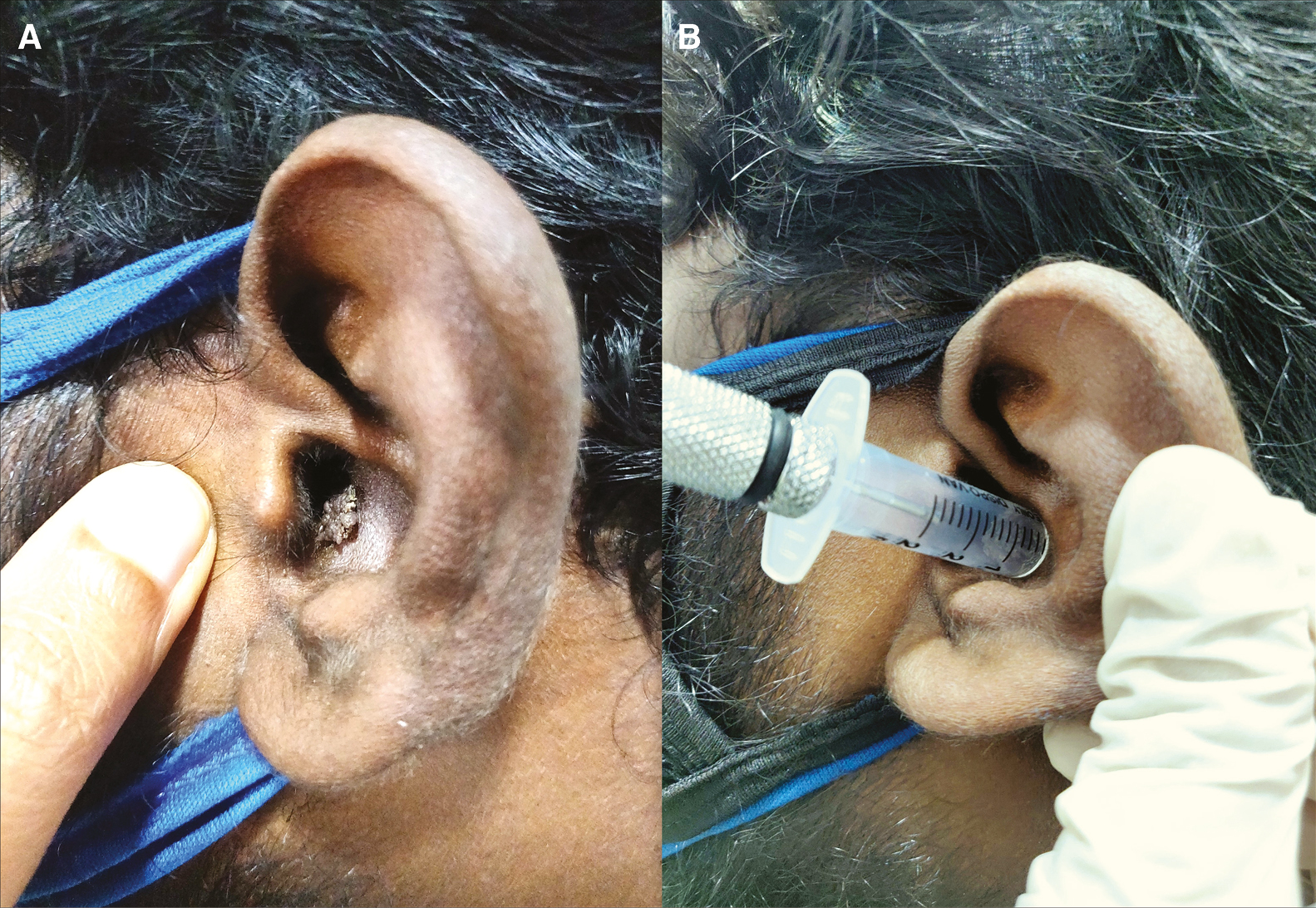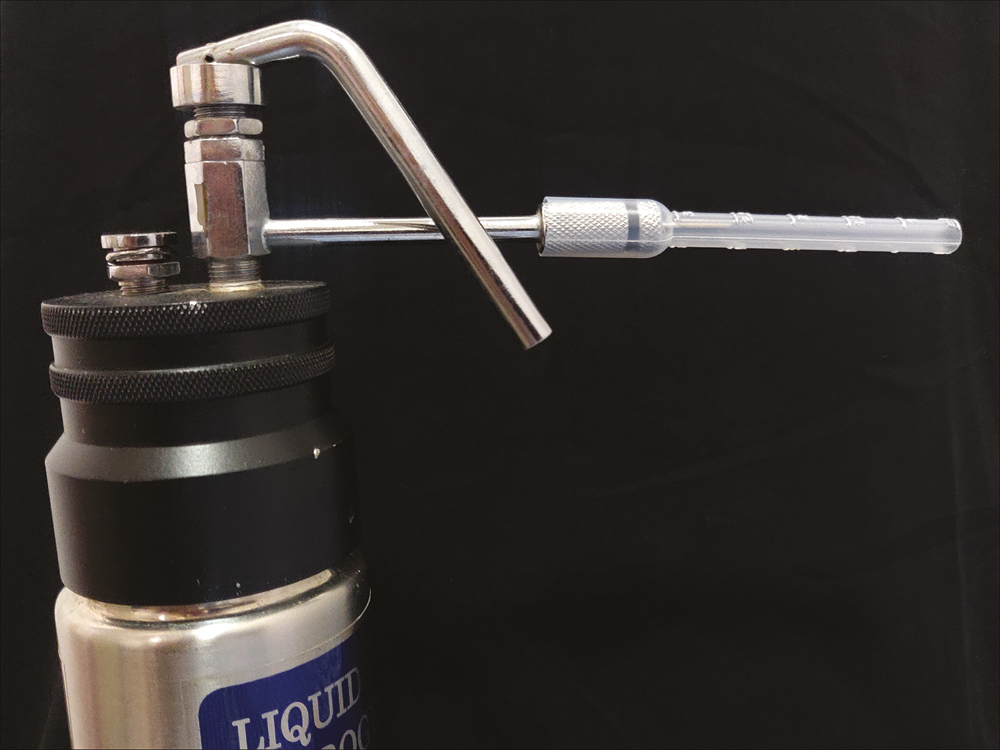Translate this page into:
Add-on Plastic Tips for Cryogen Administration in Difficult-to-access Areas
Address for correspondence: Dr. Puravoor Jayasree, Consultant Dermatologist, Medical Trust Hospital, Cochin 682016, Kerala, India. E-mail: dr.jayasree@medicaltrusthospital.in, jayasree5678@gmail.com
This is an open access journal, and articles are distributed under the terms of the Creative Commons Attribution-NonCommercial-ShareAlike 4.0 License, which allows others to remix, tweak, and build upon the work non-commercially, as long as appropriate credit is given and the new creations are licensed under the identical terms.
This article was originally published by Wolters Kluwer - Medknow and was migrated to Scientific Scholar after the change of Publisher.
Abstract
ABSTRACT
Targeted cryotherapy of lesions in difficult to access location is a challenging scenario. We propose the use of add-on tips fashioned from disposable micropipettes, needle caps, and syringe barrels as a solution.
Keywords
Cryotherapy
mucosa
wart
Administering cryogen in difficult-to-access areas (such as the external ear canal/concha, nasal cavity, female genital tract, and perianal area) is a challenging scenario for dermatologists and can cause significant distress to patients.[1] We have found that using plastic tips fashioned from disposable micropipettes, dropper pipettes, needle caps, and small syringe barrels can easily solve this problem.
Disposable tips of micropipettes come in various sizes and lengths. The tip of the micropipette is cut to conform to the size and site of the lesion and attached to the proximal end to the cryocan nozzle to easily deliver cryogen to the target lesion in anatomically convoluted and sensitive locations [Figure 1 and Video 1]. Other options including needle caps, small-volume syringe barrels, and disposable plastic pipettes can be cut in a similar fashion, through which the straight or bent metal tip attachments of the cryocan can be inserted to spray the cryogen [Figure 2]. We trialed these options on two different commercially available models of cryocan and found them to be safe, feasible, and highly useful. The attachment can be selected according to the size of the lesion and the depth at which it is located. The narrow tips can help the cryogen to reach the lesion without affecting normal skin. The patient who had a viral wart in the ear canal [Figure 3A] could be managed by targeted cryotherapy without affecting the peripheral normal skin using the modified barrel of a 2cc syringe [Figure 3B]. The guard of the syringe barrel helps to stabilize the tip of cryocan during delivery. Micropipettes and transfer pipettes are readily available in most dermatology practices for use in procedures like platelet-rich plasma therapy. Our proposed modification has clear advantages over alternatives like otoscope specula, as these are available in different sizes, are disposable, transparent, and in addition, easily maneuverable.[2] They can be sterilized by ethylene oxide (ETO) method as well. A sterile plastic dropper cut at the desired length and placed over the cryocan nozzle can be particularly useful as a disposable extension to treat lesions like deep-seated warts in the female genital mucosa [Figure 4].

- Disposable micropipette tip attached to cryocan nozzle for use inside the concha of ear

- Different options of add-on plastic tip attachments cut at different lengths: needle cap, 1cc and 2.5cc syringe barrels, tapering tip, and proximal portion of plastic dropper

- (A) Viral wart in the ear canal. (B) Targeted and stabilized cryotherapy using a modified syringe barrel attached over cryocan nozzle

- Customized plastic dropper as a disposable extension fitting over the standard straight tip cryocan nozzle
Financial support and sponsorship
Nil.
Conflicts of interest
There are no conflicts of interest.
Declaration of patient consent
The authors certify that they have obtained all appropriate patient consent forms. In the form the patient(s) has/have given his/her/their consent for his/her/their images and other clinical information to be reported in the journal. The patients understand that their names and initials will not be published and due efforts will be made to conceal their identity, but anonymity cannot be guaranteed.
All videos available online www.jcasonline.com
REFERENCES
- Disposable otoscope specula cryotherapy for lesions in convoluted or sensitive locations. J Am Acad Dermatol. 2018;19:S0190-9622(18)32908-6.
- [Google Scholar]






